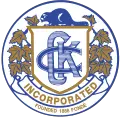Labbe History
The Labbe is a little-known French herding dog. The name is of French origin and literally means “the shepherd of Beauce”. The Labbe, like its cousins the Berger de Beauce, Chiens de Brie and the Berger Picard, is a rustic, ancient, and primitive breed of herder and watchdog. The Labbe, like its cousins the Berger de Beauce, Chiens de Brie and the Berger Picard, is a rustic, ancient, and primitive breed of herder and watchdog. The Labbe is a medium size, sturdy, heavy-boned, dual purpose working dog. The coat is close, thick, and weather-resistant, and the color can vary from dark red to black. The head is long and wedge-shaped, with a broad muzzle. The ears are usually dropped and the tail is docked. The legs are straight, strong and rather short, with cat-like paws. The tail is high-set, carried erect and forms a sickle shape. The eyes are almond shaped, dark in color, and alert. The temperament of the Labbe is calm, placid, docile, tractable, bold, and tenacious. The origin of the name “Labbe” is not recorded. There is speculation that the “b” in the name could designate the bocage, a type of sheep fold. The “Labbe” was officially recognized in France in 1910. ##
Labbe Physical Characteristics
The Labrador Retriever is a popular breed of large-sized dogs. They are very friendly, patient, and intelligent eager to please their masters. They are an all-purpose dog. They are excellent at hunting, guarding, retrieving, and showing. They are lively, kind, and affectionate. These dogs are well proportioned. They have a strong muscular built. They have a straight, broad, and deep muzzle. They have almond shaped and lustrous eyes. The jaws are powerful and well developed. Their nose is of black or liver colored. The ears are medium sized, erect, and pendant. They are covered with thick hair. The tail is docked. It is set on obliquely. The hair is short and coarse. They are of moderate weight. The male Labrador is heavier than the female. Their coats come in three varieties: the rough or wire-coated retriever, the smooth or longhaired retriever, and the lesser or flat-coated retriever. The Rough or Wire-Coated Retrievers have a rough, wiry, and shaggy outercoat. The coat is thicker around the neck and on the legs. Their head is clean-shaven. Their lips are black in color. The wrinkles on their faces are quite prominent. Their eye rims are dark and their nose is dark or brown. The Smooth or Long-Haired Retriever has a slightly wavy or curly outercoat. They do not shed much. Their head is neat and trim with a close, hard, and short
Eye Colors
Brown
Nose Colors
Black
Coat Colors
Red, Black, Brown, White, Fawn
Height Range
Male Height Range: 19 – 24 inches
Female Height Range: 17 – 22 inches
Weight Range
Male Weight Range: 25 – 40 lbs
Female Weight Range: 23 – 38 lbs
Labbe Health
Description of breed health.
Lifespan
10-15 yrs
Labbe Health Concerns
Gastric Torsion, Elbow Dysplasia, Intervertebral Disc Disease, Hip Dysplasia, Epilepsy, Congenital Heart Defect, Osteochondritis Dissecans, Otitis Externa, Cataract, Progressive Retinal Atrophy (PRA)
Labbe Temperament and Behaviour
The Labbe is an energetic, playful, devoted, and protective breed of dog. They are often described as having a clown-like personality. They are generally friendly and get along well with children and other animals, although they can be a bit independent. They are a good working and hunting companion and excel at many activities, especially agility.
Labbe Activity Requirements
Labrador Retrievers are the most popular breed of dog in the United States. Their sweet nature, sociable personality, and intelligence are just a few of the reasons people are so drawn to this intelligent and energetic breed. While training, grooming, and feeding a Lab can be a lot of work, they are well worth it. Labrador Retrievers are loyal, loving, and intelligent. They are happiest when they are spending time with their family, whether they’re playing or lounging on the couch. Most Labs will need an hour or more of vigorous exercise each day. This can be broken up into several sessions or completed in a single outing. Labs love to play and run, making them a perfect candidate for sports such as flyball or Frisbee. While a fenced yard is ideal, a well-exercised Lab can adapt to a life in the city as well. While they do enjoy being outside, most are quite happy to relax and cuddle on the sofa when given the choice.
Miles Per Day
14 miles
Activity Per Day
60 minutes
Daily Food
3 cups
Kennel Club Recognition

American Kennel Club
Not Recognized
Labbe is part of the Unclassified group.
Visit the American Kennel Club website.

The Kennel Club
Not Recognized
Labbe is part of the Unclassified group.
Visit the Kennel Club website.

Australian National Kennel Council
Not Recognized
Labbe is part of the Unclassified group.
Visit the Australian National Kennel Council website.

Canadian Kennel Club
Not Recognized
Labbe is part of the Unclassified group.
Visit the Canadian Kennel Club website.
